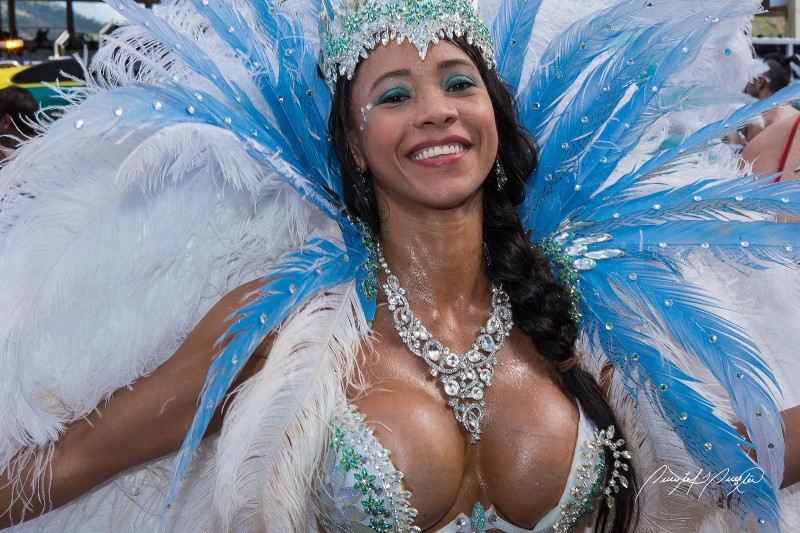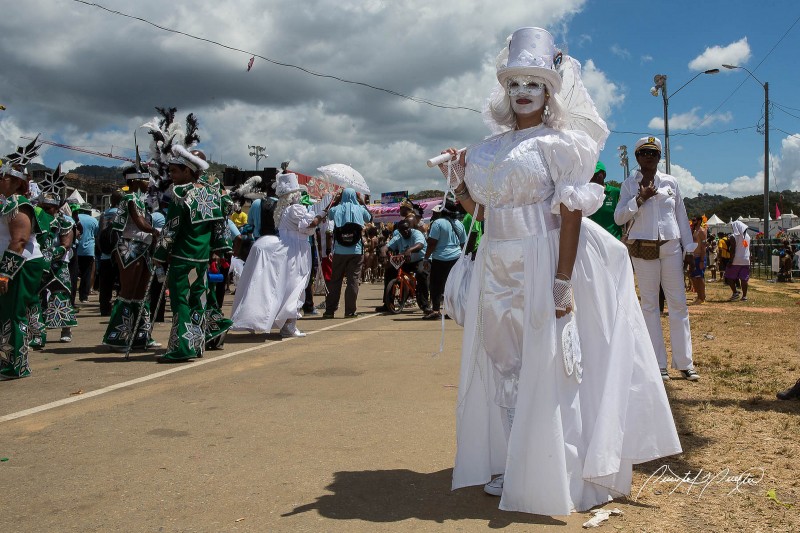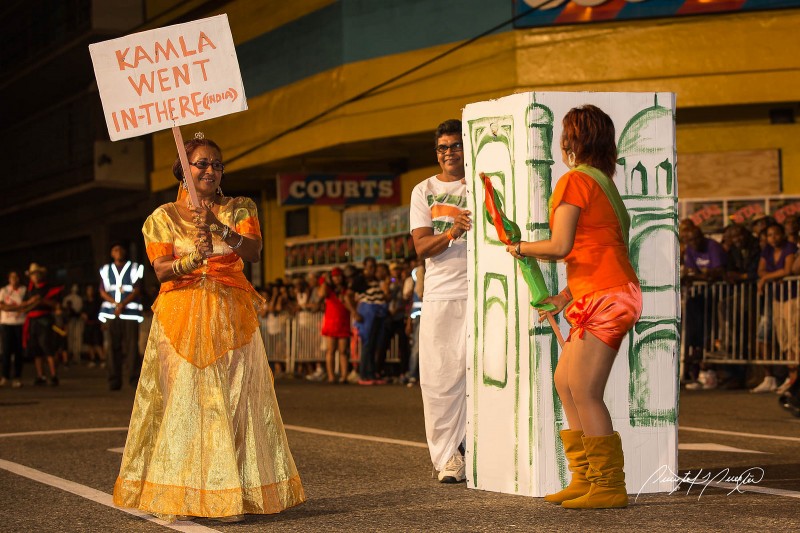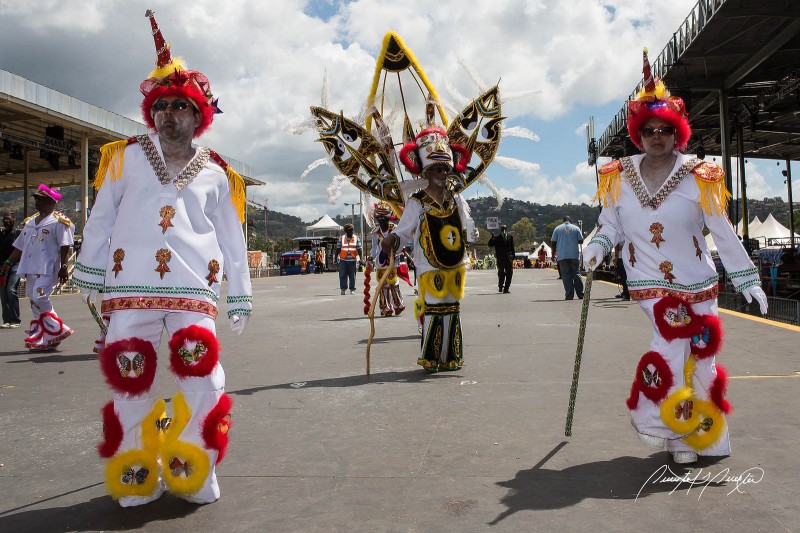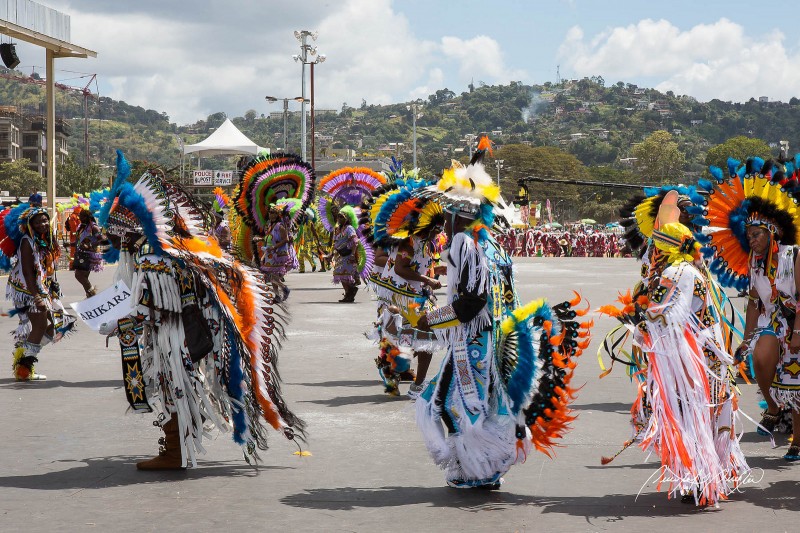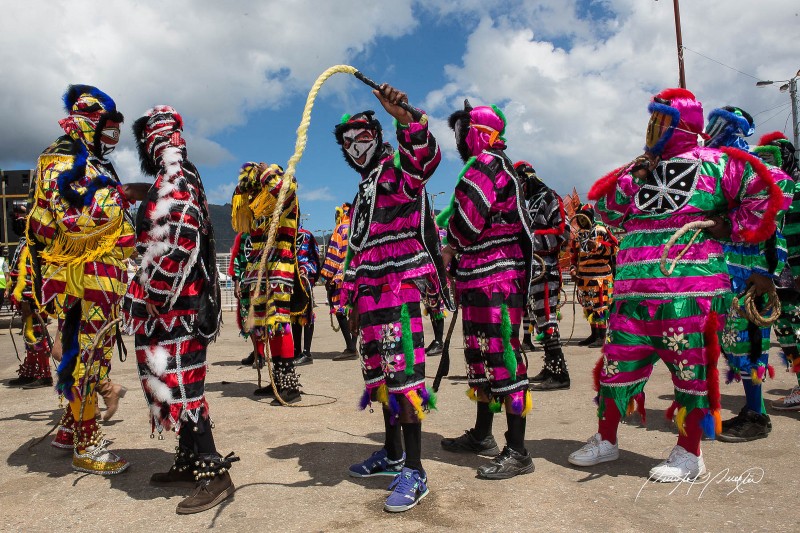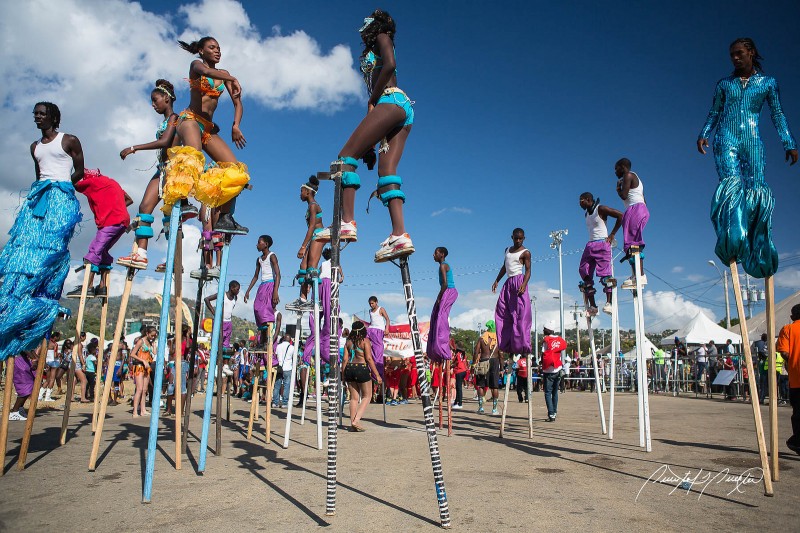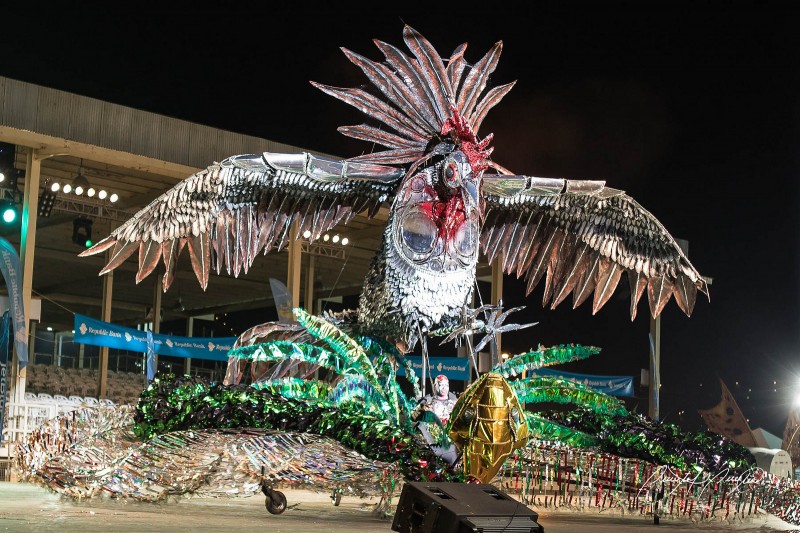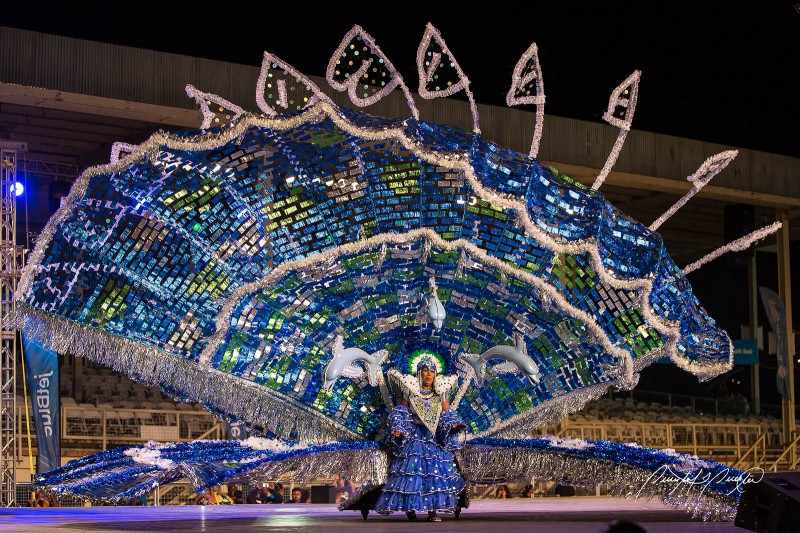The Colourful Sights
and Sounds of
Trinidad & Tobago’s
Carnival
Trinidad and Tobago Carnival has been called “the greatest show on earth”, with its costumes, pageantry, music and seemingly endless fetes leading up to the main event — the all-day street parades on Carnival Monday and Tuesday.
Like most carnivals around the world, the twin island version often makes headlines for its beautiful and scantily clad women, but the festival is much more than meets the eye.
Carnival — or carne vale , as in “farewell to the flesh” — is an annual tradition that gives revellers a last hedonistic hoorah before the austerity of Lent. The Trinidad and Tobago version evolved from the masquerade balls the islands’ French colonisers would host; when Emancipationcame in 1833, the freed slaves were finally able to mimic their former masters without consequence.
Two years prior, in 1881, the Canboulay Riots saw the descendants of slaves fighting for their right to put their own uninhibited spin on Carnival as a symbol of resistance. Their mimicry caused what began as an elite festival to naturally converge with what was at the time considered baser — African expressions, like the Calinda (stickfighting set to chanting and drums) and the Canboulay. Originally a celebration that revolved around the harvesting of the sugar cane (cannes bruléesmeans burnt cane), it was full of earthy rhythms and movement, and played an integral part in honing the music of Carnival, eventually giving birth to the steel pan, since percussion instruments — such as African drums — were banned in the 1880s.
While pan music can no longer be considered the main soundtrack of Trinidad and Tobago Carnival (many would argue that soca music has laid claim to that title), the annual Panorama competition is still a staple on any Carnival lover’s calendar. The genesis of the festival has not been forgotten: the Canboulay Riots are commemorated with an annual reenactment the Friday before Carnival.
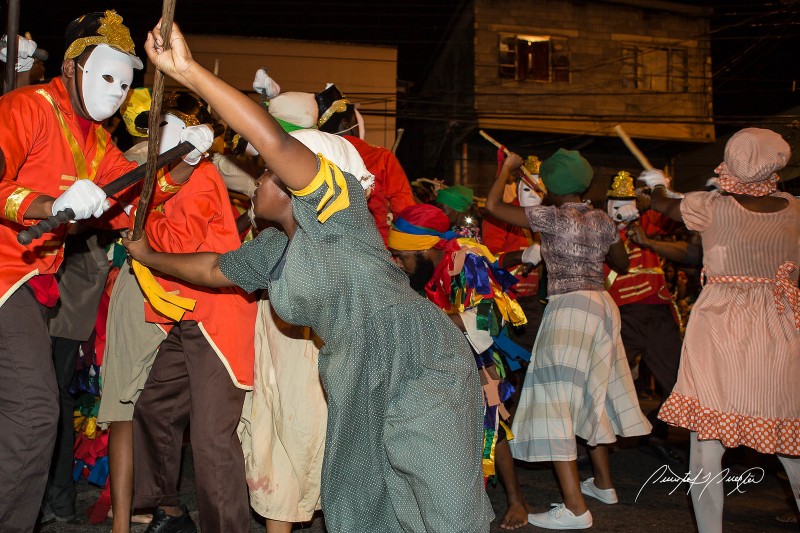 “The Riot”; photo of the 1881 Canboulay Riots reenactment by Quinten Questel, used under a CC BY-NC-ND 2.0 license.
“The Riot”; photo of the 1881 Canboulay Riots reenactment by Quinten Questel, used under a CC BY-NC-ND 2.0 license.
Despite the popularity of what has become known as mass-produced “bikini and beads” mas’, tradition is still alive and well in Trinidad and Tobago Carnival. Look no further than the portrayals of folklore Carnival characters and the Old Mas’ bands that provide humourous and cutting social and political commentary with their creative costumes and clever placard messages, to know that the roots of resistance are still strong.
One small band, Cat in Bag Productions (of which Global Voices Managing Director Georgia Popplewell is a member), brought the Old Mas concept to life on Carnival Monday and Tuesday by addressing the rampant political corruption in a presentation called “Red Handed”:
Traditional characters also abounded in the form of Sailor Mas’, Fancy Indians, Jab Jabs (pretty devils), Jab Molassies (the more menacing kind) and Moko Jumbies.

Jab Molassie. Photo by Quinten Questel, used under a CC BY-NC-ND 2.0 license.
The Kings and Queens of Carnival competition attracted the usual interest this year, with the costumes being as large and elaborate as ever.
On Carnival Saturday, it was the youngsters’ time to masquerade. The Junior Parade of the Bands — affectionately known as “Kiddies’ Carnival” and always a spectator favourite — drew a great amount of attention and the children had a fun time.
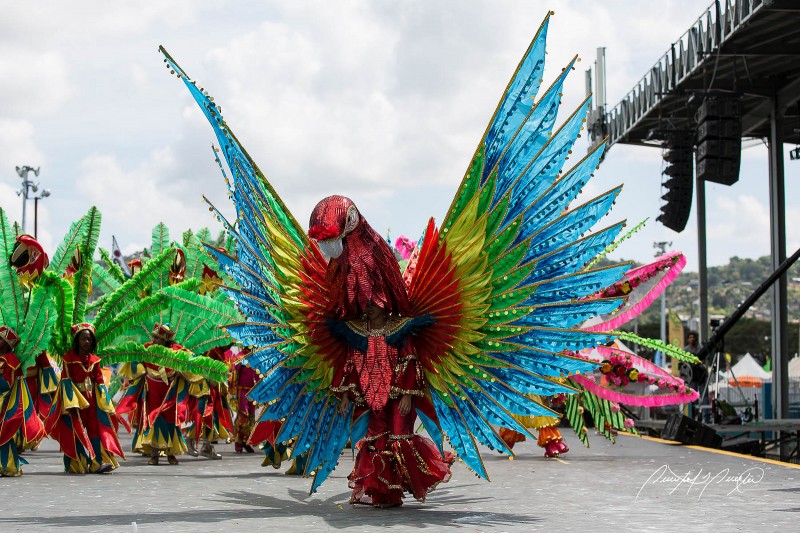
The 2015 Junior Parade of the Bands. Photo by Quinten Questel, used under a CC BY-NC-ND 2.0 license.
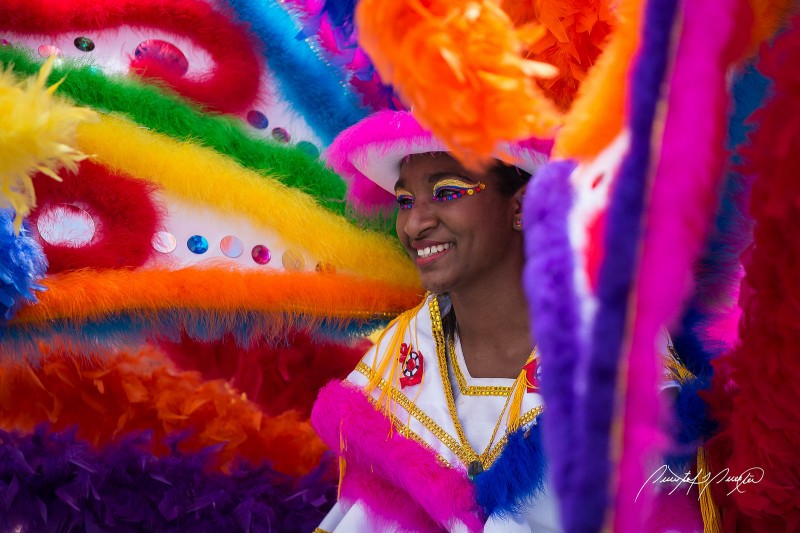
A junior masquerader. Photo by Quinten Questel, used under a CC BY-NC-ND 2.0 license.
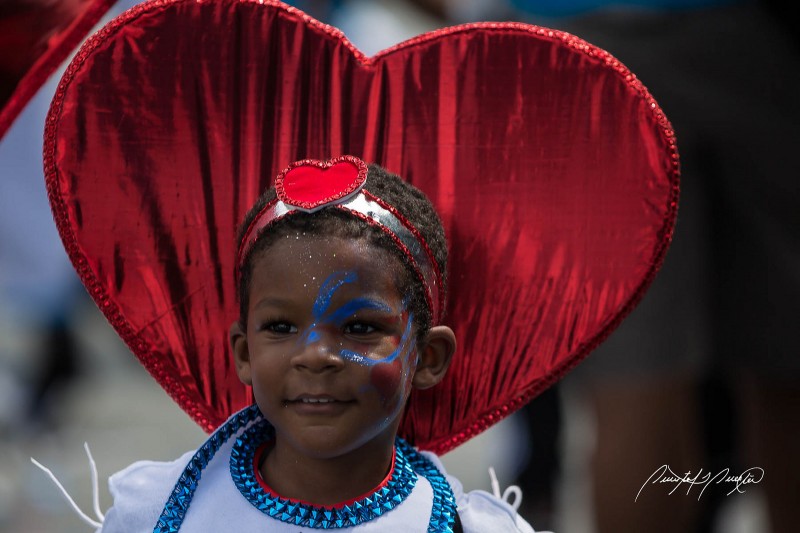
Carnival love. Photo by Quinten Questel, used under a CC BY-NC-ND 2.0 license.
The Carnival excitement always crescendoes on Dimanche Gras night (the Sunday before Carnival), as it marks the cultural pageant at which each year’s Calypso Monarch is chosen and crowned, the King and Queen of Carnival take to the stage and the champion steelbands perform. Most importantly, it leads into J’ouvert.
Literally translated as “the opening of the day”, J’ouvert is an acknowledgement of the raw, earthy, ritualistic aspects of Trinidad and Tobago Carnival. Revellers cover themselves in mud, grease, tar, clay, body paint or various combinations thereof and dance in the streets in the wee hours of the morning while Jab Molassies “wine” (a sexually suggestive dance) to a rhythmic beat that they beat on biscuit tins. Many of the Jabs move as small bands of devils, in which some members play the role of imps, restraining the Jab Jabs with chains as they struggle to be free in their wild and wanton dance. Some blue devil characters are so serious about their portrayal that they even “spit fire”.
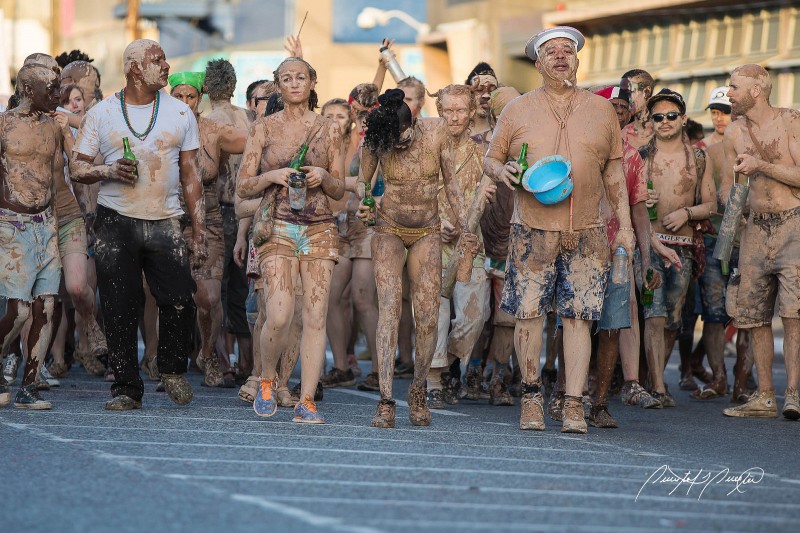
J’ouvert revellers. Photo by Quinten Questel, used under a CC BY-NC-ND 2.0 license.

Fire breathing blue devil. Photo by Quinten Questel, used under a CC BY-NC-ND 2.0 license.
Come Carnival Monday and Tuesday, the focus turns to pretty mas’. While many feel that this aspect of the festival has been commercialised to the point of it losing its uniqueness, no one can argue that it captures the carefree spirit and camaraderie that are part of the Trinidad and Tobago Carnival experience.
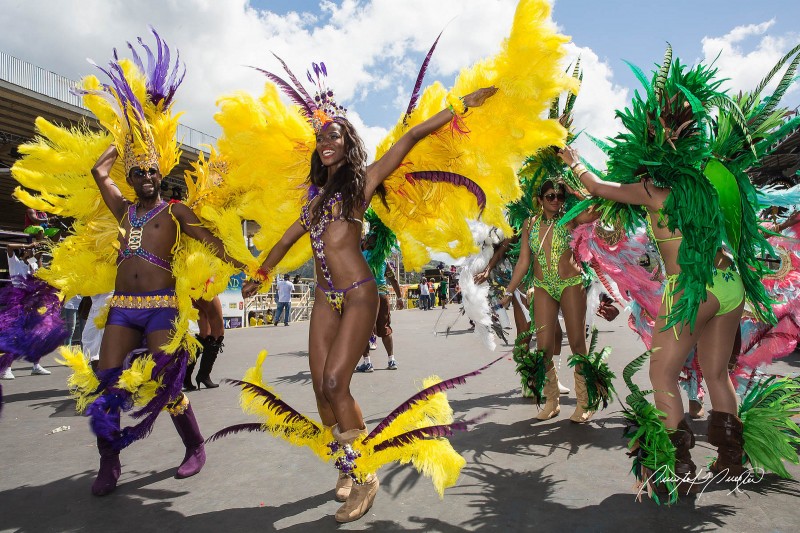
Jump up! Photo by Quinten Questel, used under a CC BY-NC-ND 2.0 license.
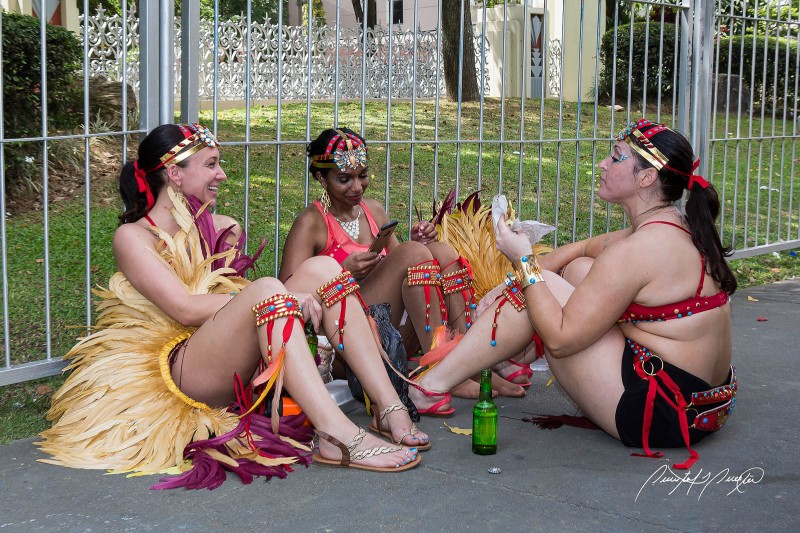
Friends take a break during the street parade. Photo by Quinten Questel, used under a CC BY-NC-ND 2.0 license.
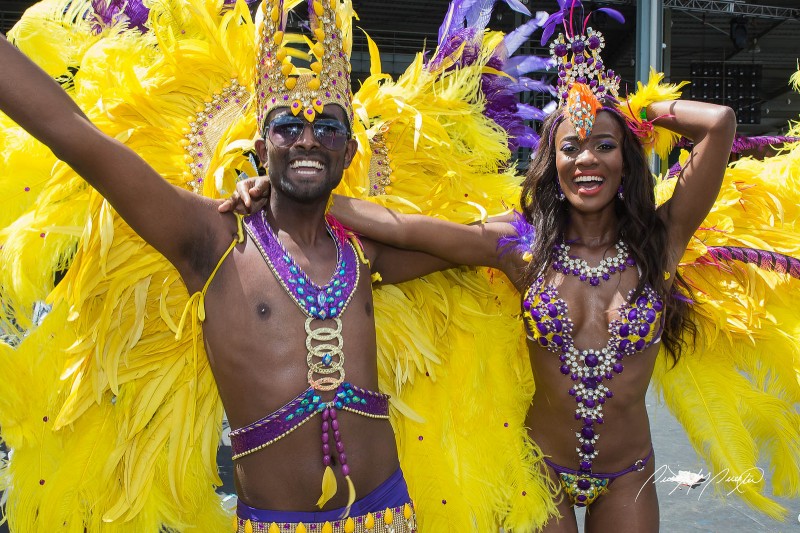 Having fun! Photo by Quinten Questel, used under a CC BY-NC-ND 2.0 license.
Having fun! Photo by Quinten Questel, used under a CC BY-NC-ND 2.0 license.
So…are you coming for Trinidad and Tobago Carnival next year? The 2016 dates for the greatest street party in the world are February 8 and 9.



